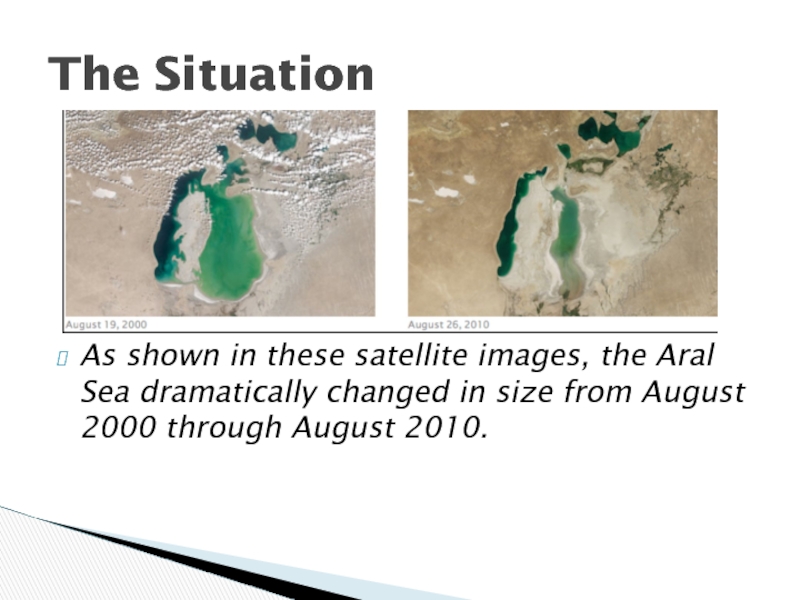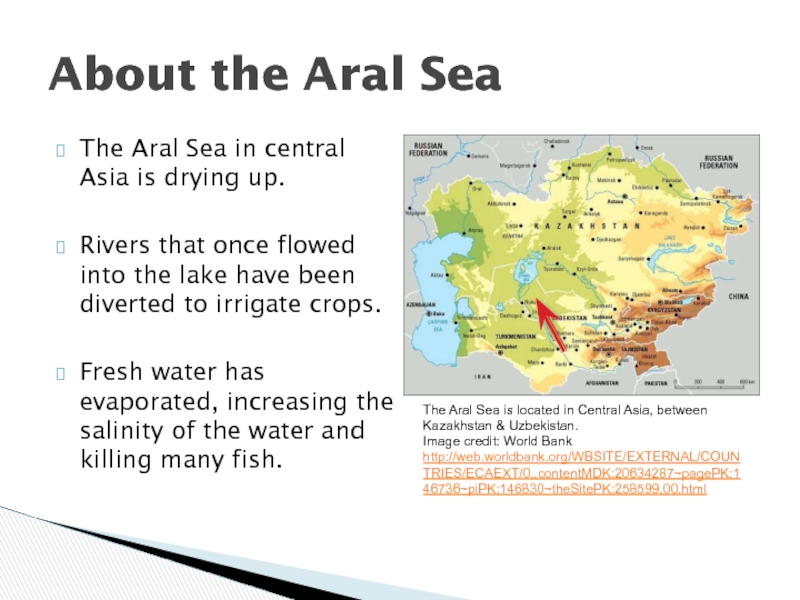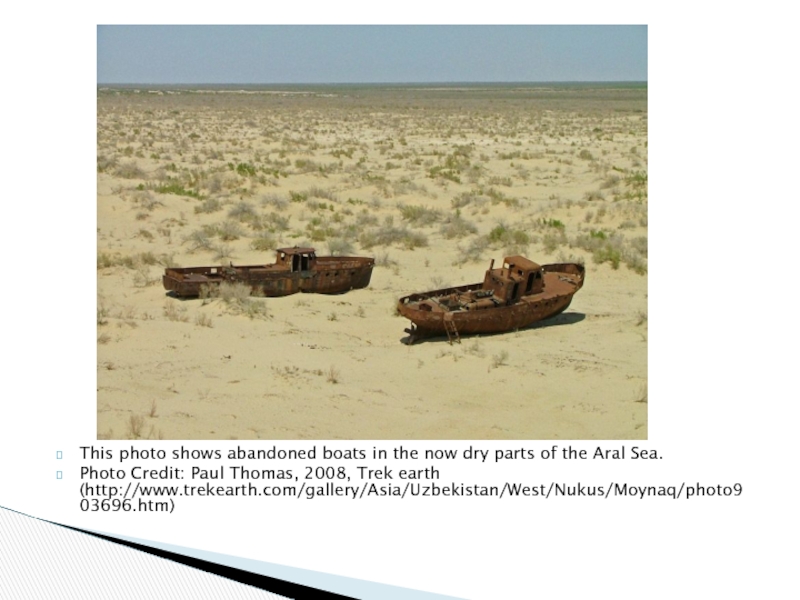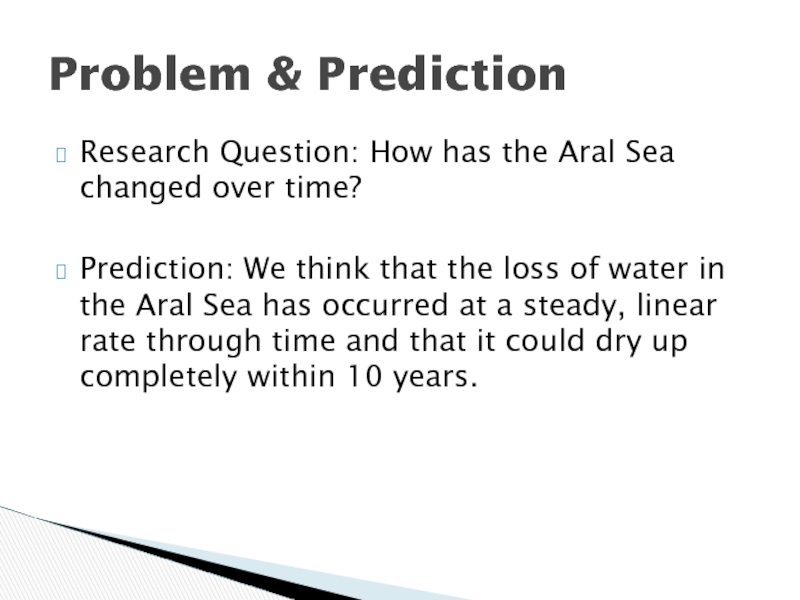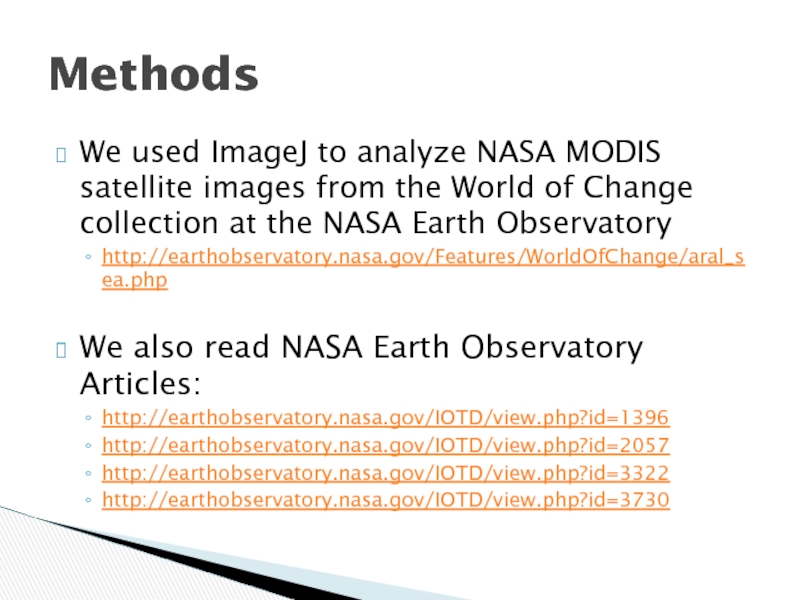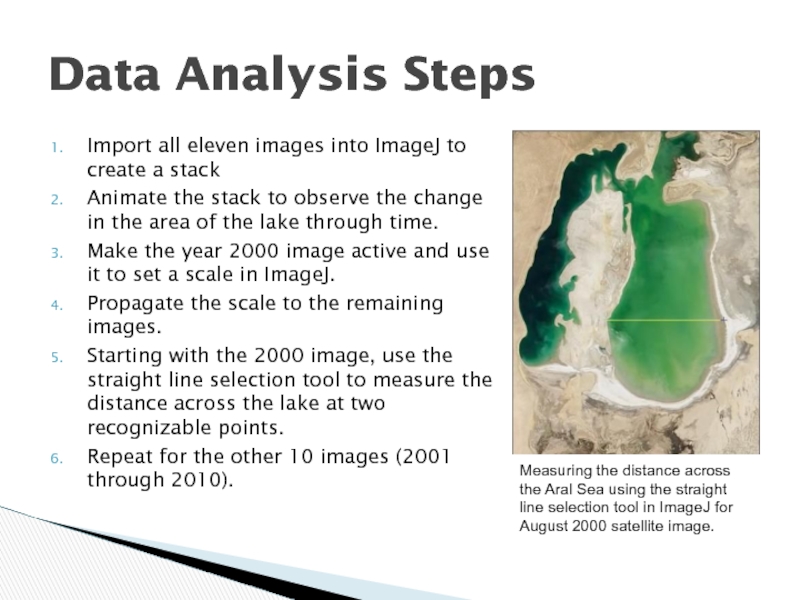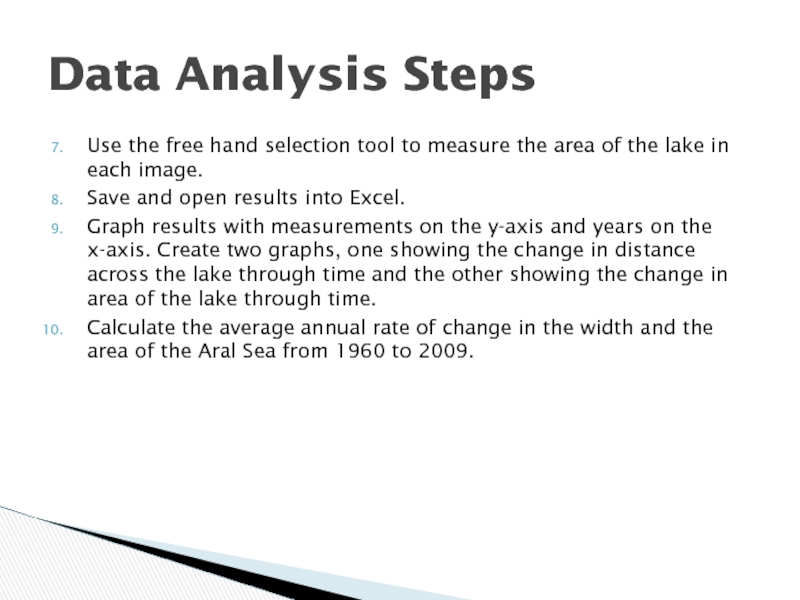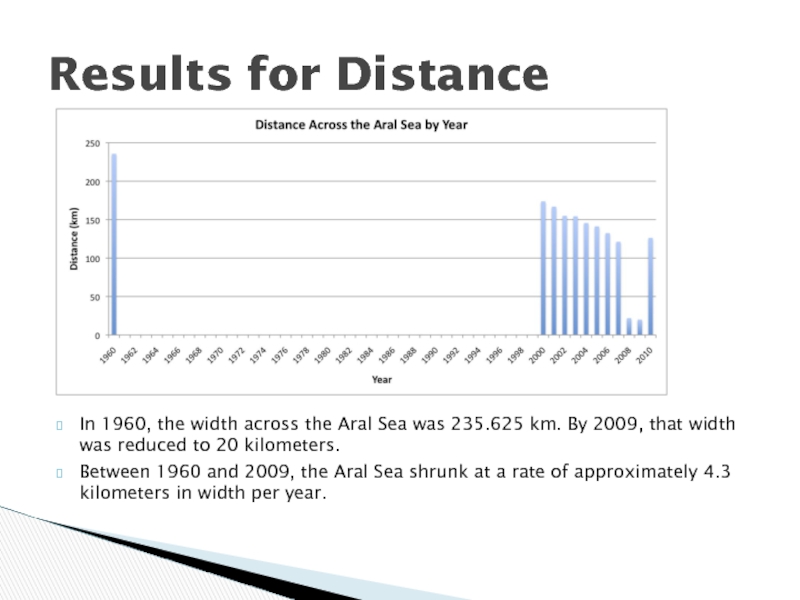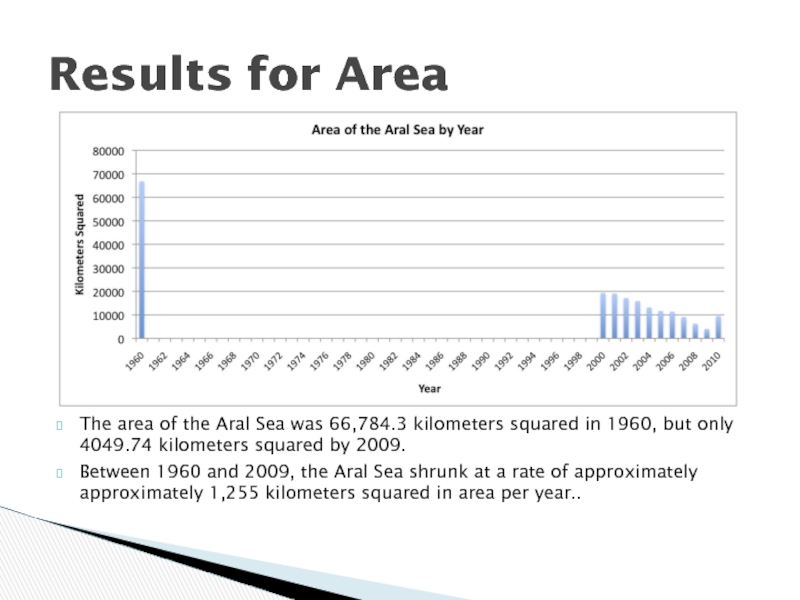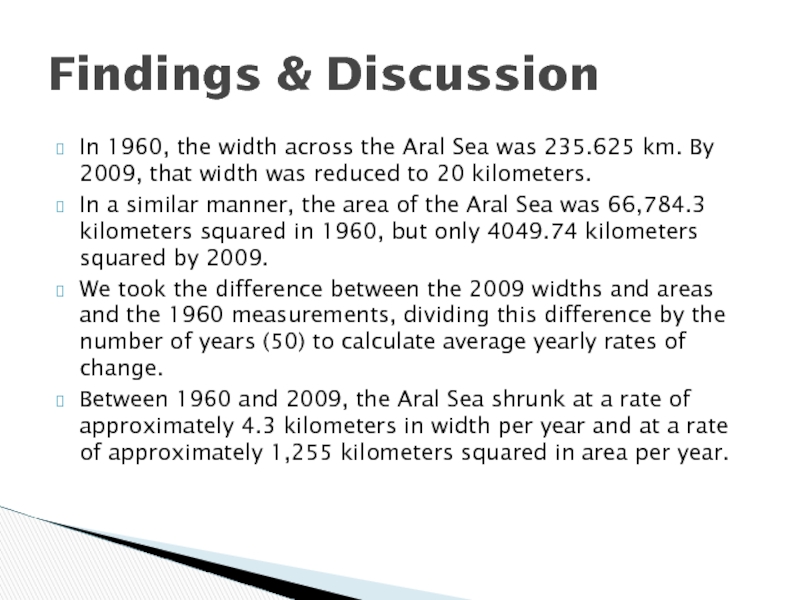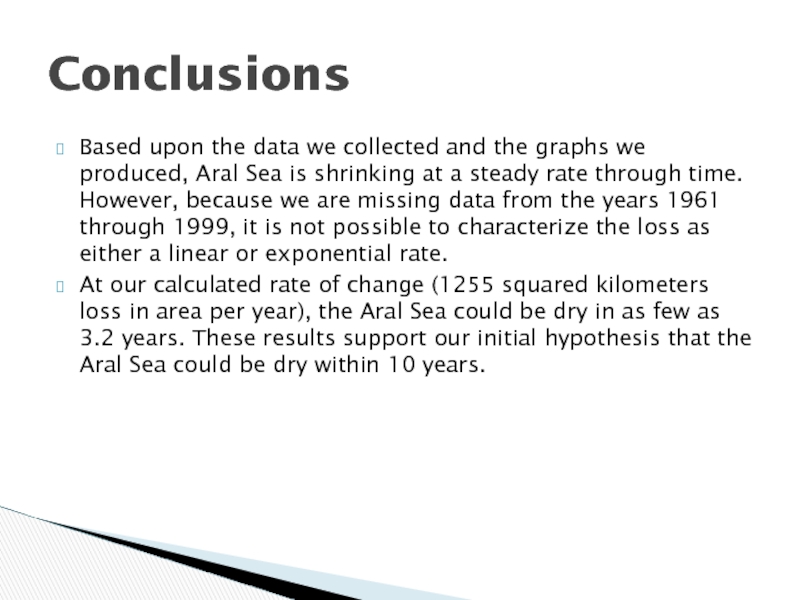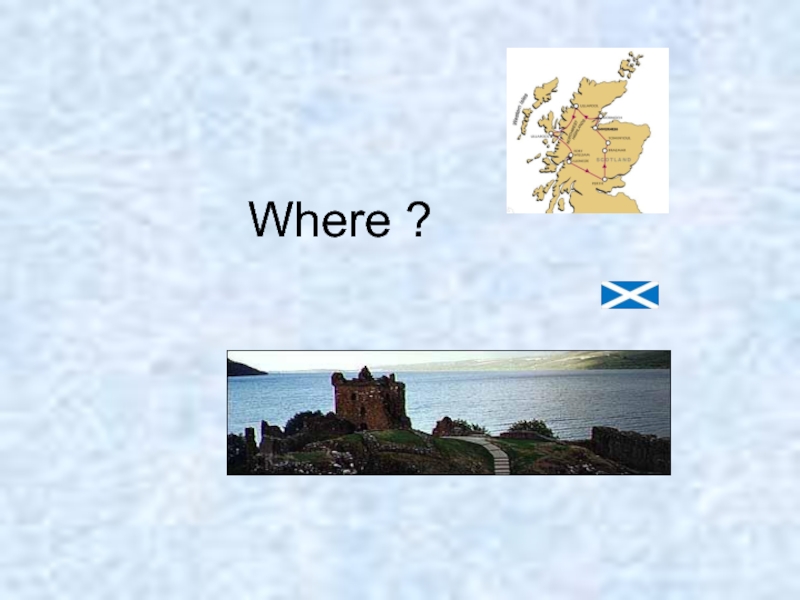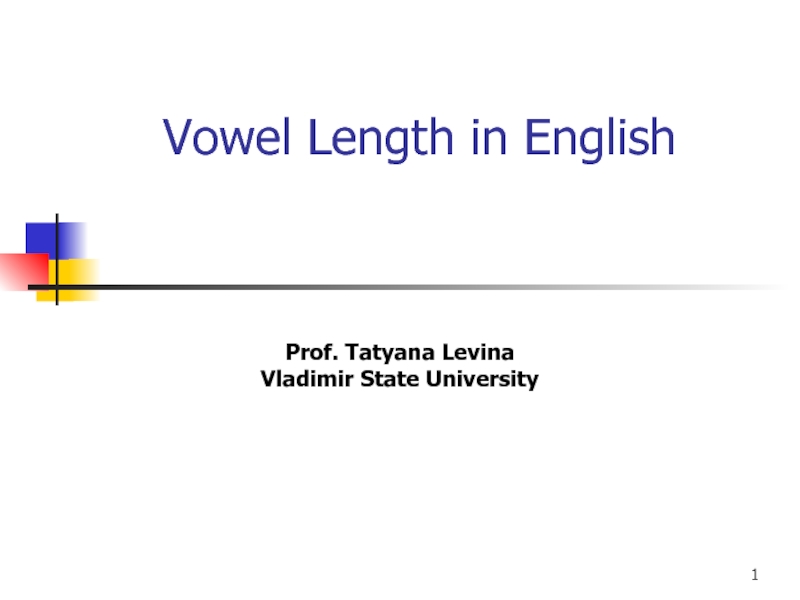- Главная
- Разное
- Дизайн
- Бизнес и предпринимательство
- Аналитика
- Образование
- Развлечения
- Красота и здоровье
- Финансы
- Государство
- Путешествия
- Спорт
- Недвижимость
- Армия
- Графика
- Культурология
- Еда и кулинария
- Лингвистика
- Английский язык
- Астрономия
- Алгебра
- Биология
- География
- Детские презентации
- Информатика
- История
- Литература
- Маркетинг
- Математика
- Медицина
- Менеджмент
- Музыка
- МХК
- Немецкий язык
- ОБЖ
- Обществознание
- Окружающий мир
- Педагогика
- Русский язык
- Технология
- Физика
- Философия
- Химия
- Шаблоны, картинки для презентаций
- Экология
- Экономика
- Юриспруденция
How Has the Aral Sea Changed Over Time презентация
Содержание
- 1. How Has the Aral Sea Changed Over Time
- 2. As shown in these satellite images, the
- 3. The Aral Sea in central Asia is
- 4. This photo shows abandoned boats in the
- 5. Research Question: How has the Aral Sea
- 6. We used ImageJ to analyze NASA MODIS
- 7. Import all eleven images into ImageJ to
- 8. Use the free hand selection tool to
- 9. In 1960, the width across the Aral
- 10. The area of the Aral Sea was
- 11. In 1960, the width across the Aral
- 12. Based upon the data we collected and
- 13. Through the years, the distance loss across
- 14. Through If the Aral Sea continues to
Слайд 1How Has the Aral Sea Changed Over Time?
Sally Student, Sam Student
Circle
Слайд 2As shown in these satellite images, the Aral Sea dramatically changed
The Situation
Слайд 3The Aral Sea in central Asia is drying up.
Rivers that
Fresh water has evaporated, increasing the salinity of the water and killing many fish.
About the Aral Sea
The Aral Sea is located in Central Asia, between Kazakhstan & Uzbekistan.
Image credit: World Bank http://web.worldbank.org/WBSITE/EXTERNAL/COUNTRIES/ECAEXT/0,,contentMDK:20634287~pagePK:146736~piPK:146830~theSitePK:258599,00.html
Слайд 4This photo shows abandoned boats in the now dry parts of
Photo Credit: Paul Thomas, 2008, Trek earth (http://www.trekearth.com/gallery/Asia/Uzbekistan/West/Nukus/Moynaq/photo903696.htm)
Слайд 5Research Question: How has the Aral Sea changed over time?
Prediction: We
Problem & Prediction
Слайд 6We used ImageJ to analyze NASA MODIS satellite images from the
http://earthobservatory.nasa.gov/Features/WorldOfChange/aral_sea.php
We also read NASA Earth Observatory Articles:
http://earthobservatory.nasa.gov/IOTD/view.php?id=1396
http://earthobservatory.nasa.gov/IOTD/view.php?id=2057
http://earthobservatory.nasa.gov/IOTD/view.php?id=3322
http://earthobservatory.nasa.gov/IOTD/view.php?id=3730
Methods
Слайд 7Import all eleven images into ImageJ to create a stack
Animate the
Make the year 2000 image active and use it to set a scale in ImageJ.
Propagate the scale to the remaining images.
Starting with the 2000 image, use the straight line selection tool to measure the distance across the lake at two recognizable points.
Repeat for the other 10 images (2001 through 2010).
Data Analysis Steps
Measuring the distance across the Aral Sea using the straight line selection tool in ImageJ for August 2000 satellite image.
Слайд 8Use the free hand selection tool to measure the area of
Save and open results into Excel.
Graph results with measurements on the y-axis and years on the x-axis. Create two graphs, one showing the change in distance across the lake through time and the other showing the change in area of the lake through time.
Calculate the average annual rate of change in the width and the area of the Aral Sea from 1960 to 2009.
Data Analysis Steps
Слайд 9In 1960, the width across the Aral Sea was 235.625 km.
Between 1960 and 2009, the Aral Sea shrunk at a rate of approximately 4.3 kilometers in width per year.
Results for Distance
Слайд 10The area of the Aral Sea was 66,784.3 kilometers squared in
Between 1960 and 2009, the Aral Sea shrunk at a rate of approximately approximately 1,255 kilometers squared in area per year..
Results for Area
Слайд 11In 1960, the width across the Aral Sea was 235.625 km.
In a similar manner, the area of the Aral Sea was 66,784.3 kilometers squared in 1960, but only 4049.74 kilometers squared by 2009.
We took the difference between the 2009 widths and areas and the 1960 measurements, dividing this difference by the number of years (50) to calculate average yearly rates of change.
Between 1960 and 2009, the Aral Sea shrunk at a rate of approximately 4.3 kilometers in width per year and at a rate of approximately 1,255 kilometers squared in area per year.
Findings & Discussion
Слайд 12Based upon the data we collected and the graphs we produced,
At our calculated rate of change (1255 squared kilometers loss in area per year), the Aral Sea could be dry in as few as 3.2 years. These results support our initial hypothesis that the Aral Sea could be dry within 10 years.
Conclusions
Слайд 13Through the years, the distance loss across the left side of
Our projections are based on the assumption that the lake will continue to lose water in future years. In fact, in 2010, both the width and the area of the Aral Sea increased. We measured the width and came up with 126 kilometers. The area was 9437 kilometers squared. If steps are taken to replenish the water, then the sea might not dry up after all.
Limitations to Our Research
Слайд 14Through If the Aral Sea continues to shrink, it is in
Implications for the Future

